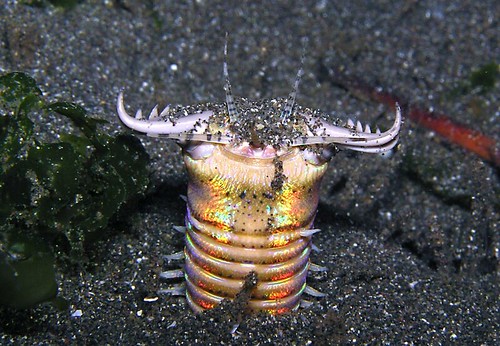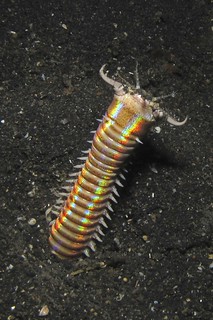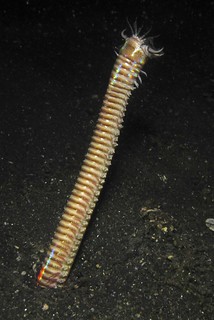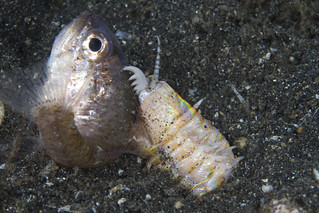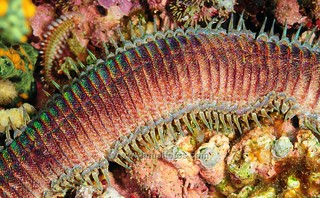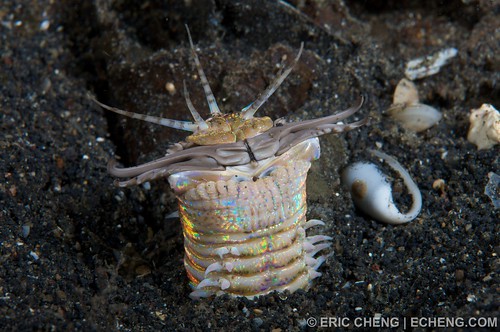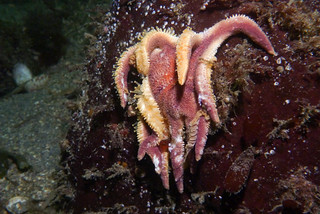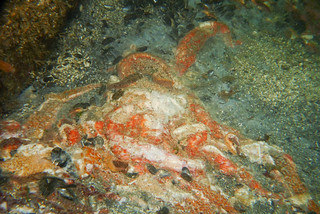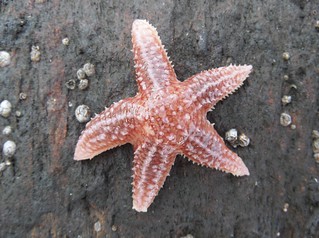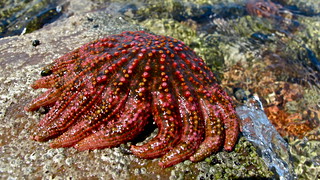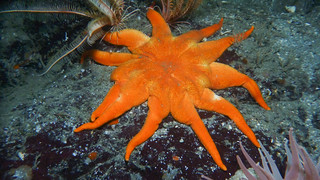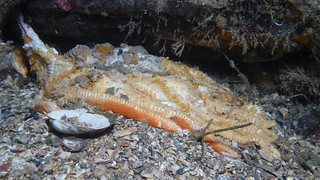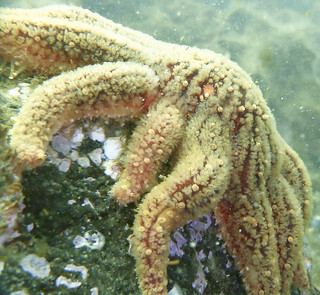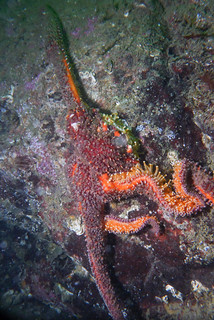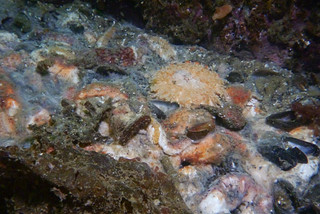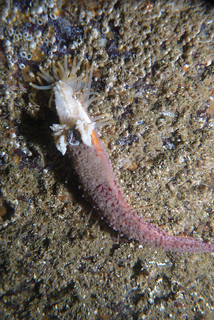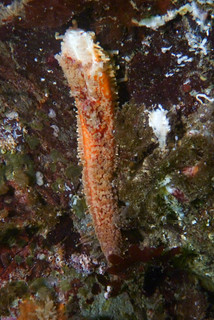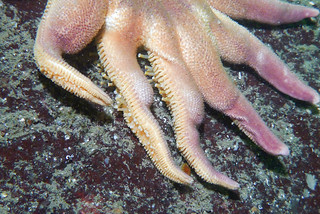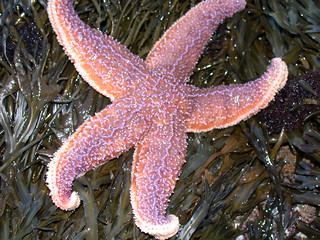 |
| Image by MatYts |
There are well OVER 2135 species known and many more discovered every day. However, its not enough to know that there are many KINDS of brittle stars, but another important fact is that they are also some of the most ABUNDANT echinoderms.
They live everywhere..small cryptical hiding things. Under rocks, in crevices, on other animals, under other animals, buried in sediment, even hiding among OTHER brittle stars!
Here, for example are brittle stars with their arms emerging from the holdfast (i.e. the anchor) on kelp!
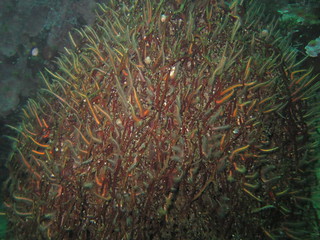 |
| Image by Mr. Lobos |
 |
| Image by Jylnott |
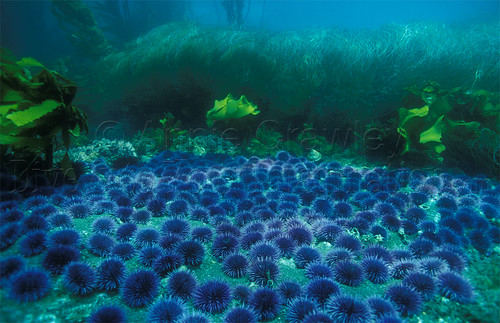 |
| Image by Anne Crawley |
When one sees brittle stars en masse, one cannot then, be a little concerned...
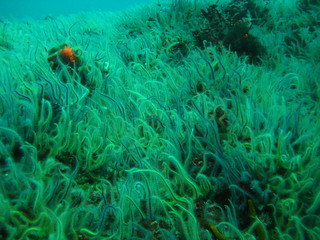 |
| Image by shawn_broes |
What's going on?
So, I'll discuss two kinds of situations where brittle stars literally CARPET the sea bottom.
In a cold-temperate water genus of brittle stars, called Ophiothrix which you can find in Europe, and in the cold-temperate waters of both the Pacific and Atlantic coasts of North America, they frequently occur in very dense, very abundant numbers!
How dense? One paper by G.F. Warner found that the mean population of O. fragilis in the British Islands was found to cover 23% of the ground in some areas, with a mean population density of 1330 indivdiuals per square meter!!
For example, here's a couple of nice shots of dense Ophiothrix fragiis beds them from Scotland (and thus the North Atlantic!)
 |
| Image by MatYts |
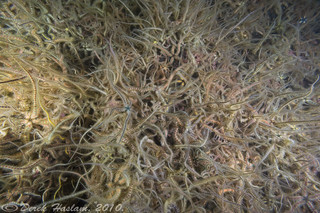 |
| Image by hsacdirk |
 |
| Image by echo&dust |
 |
| Image by hsacdirk |
Here is a nice video of Ophiothrix in Santa Barbara, where they completely carpet the bottom.
Another video of Ophiothrix from Anacapa Island, Channel Islands
And another species occurring in Monterey.. perhaps members of the Amphiuridae..
In either case, arms are extended into the water current where their spines capture organic food particles being carried along by the water....Spines are used in conjunction with tube feet for filter feeding! WATCH those tube feet go! An example of the original science of this can be found here.
 |
| Image by Kristy Moore |
YES! This paper by Raphael Morgan and Michel Jangoux showed that larvae were encouraged to undergo metamorphosis into adults by the presence of OTHER adults.
So, in theory, one or others settle down because they are taking advantage of a desirible water/current/food flow. And then another and then another..
And before ya' know it the larvae in the water sense that other adults are around and THEY settle out and more and MORE...
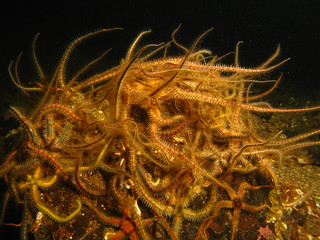 |
| Imge by MatYts |
...and BOOM there goes the neighborhood! Even if you're a voracious Crossaster papposus "rose star" you can only eat and go through so many brittle stars...
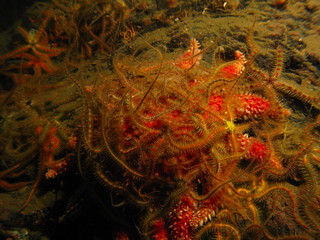 |
| Image by MatYts |
Filter Feeders can also be found in the deeps! Remember Brittle Star city?? Go here to see a nice write up of this massive colony of Ophiacantha living on a near-Antarctic seamount!
But What about in the Deep-Sea???
I said TWO kinds of brittle star carpets! so here ya' go... Ophiuroids are crazy abundant in the deep-sea as well.. comprising a HUGE amount of the biomass living on the bottoms!
 |
| Image by Scripps Oceanography |
yikes.
The story is in many ways similar to those at shallow water depth.. juveniles sense the presence of other adults and settle.. but arms are not upheld in the water as readily... What could they be doing down there?
Many have indicated that they are possibly detritivores. Feeding on dead stuff and other organic material as it falls to the deep-sea bottom... as seen here (and fighting amongst each other for food!)
In one of my earliest posts.. I also shared the delightful world of these brittle stars as PREDATORS of moving prey! A living carpet of OPHIUROID DEATH! You can read more on that here.
 |
| thanks always to Steve Stancyk for the images! |
Ophiuroids! I wouldn't want to mess with a bunch of them in a dark alley! They're takin' over!


